This post may contain affiliate links. Please read our disclosure policy.
How to make onion flakes at home using three simple methods: dehydrator, oven, or sun-drying. Perfect for long-term onion preservation and to use in several delicious ways!
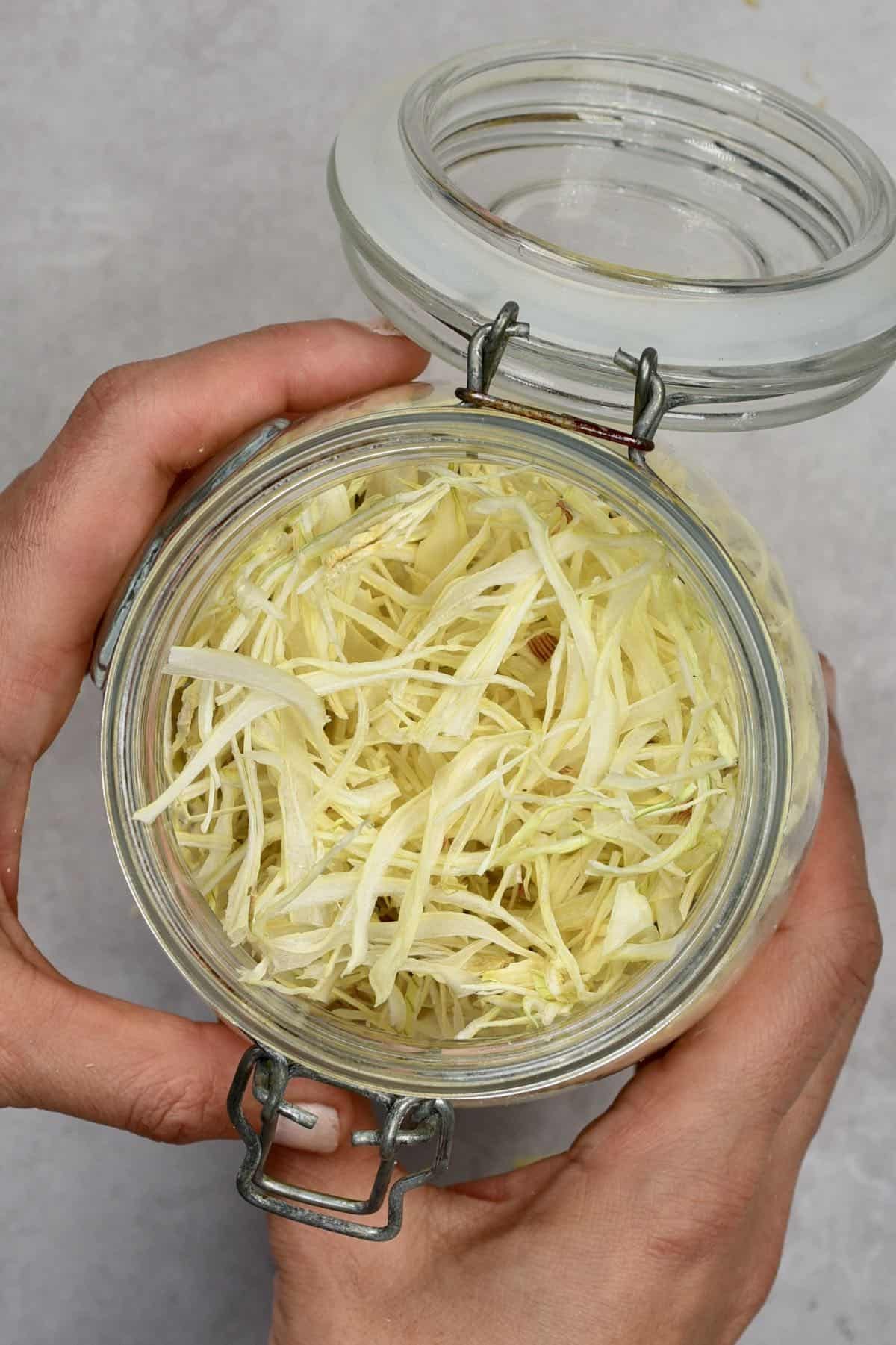
Recently I posted my simple DIY for homemade everything bagel seasoning, which contains dried garlic and onion flakes/granules. With that in mind, now is the perfect time to share my homemade guide to making dried onion flakes.
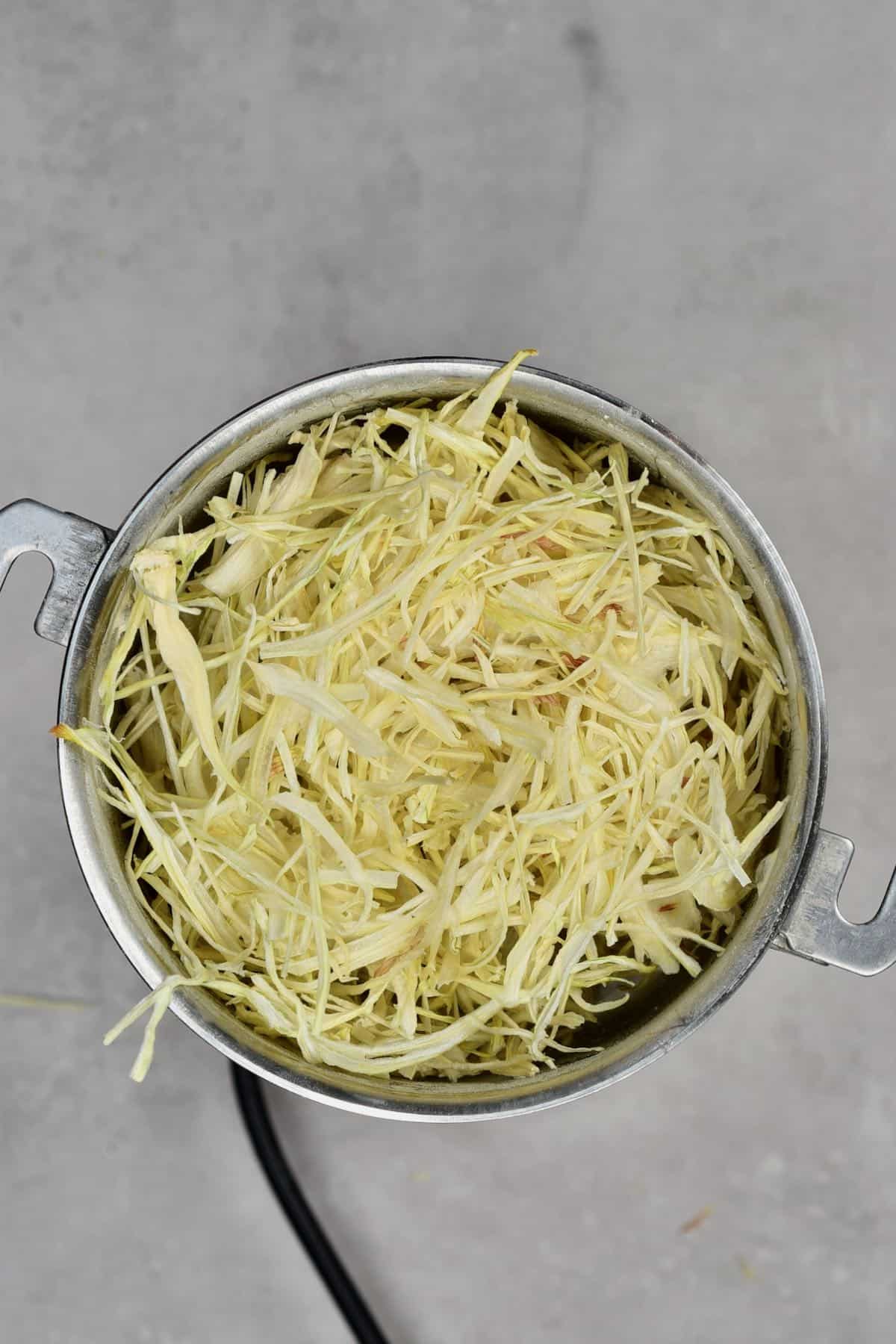
This is a great way to preserve large amounts of homegrown (or store-bought) onions, plus the dehydrated onion flakes are more cost-effective, tastier, and contain no preservatives, fillers, or anti-caking agents!
Want to save this recipe?
How To Dry Onion Flakes
Step 1: Prepare the Onion
Peel and slice the onions. You can use a mandolin to get really even, thin slices. The thinner the slices, the quicker they’ll dry. Aim for 1/8 inch at the thickest.
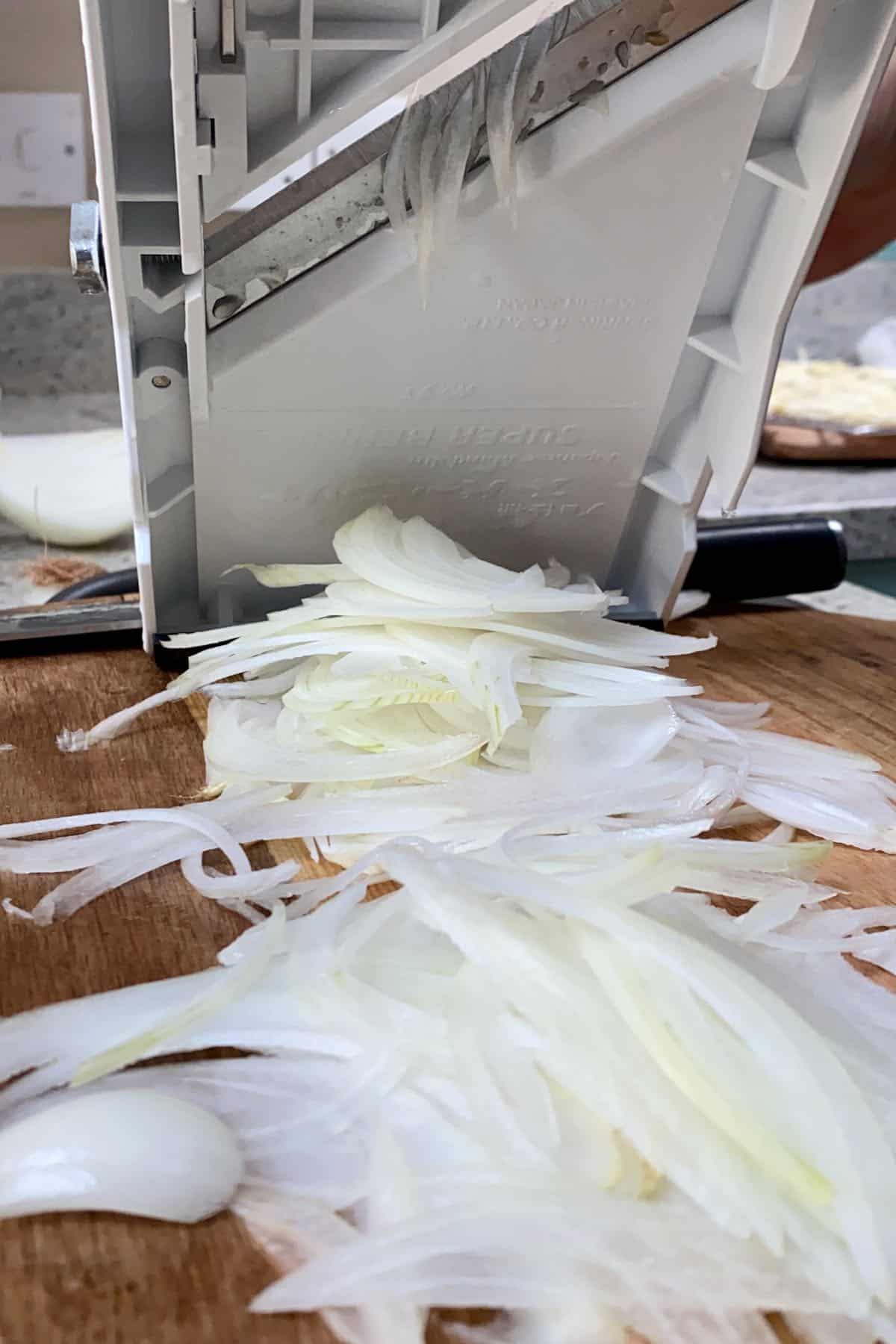
Step 2: Dehydrate them
With a dehydrator
Lay the fresh chopped onion over the dehydrator trays in a single layer, taking care not to make them overlap too much, and then dehydrate at 66ºC/150ºF for 6-8 hours (if high humidity, around 80%) or 4-6 hours (if low humidity).
They are ready when they snap when trying to bend. If they’re at all pliable, they need more time.
With an oven
Spread the onion pieces over parchment-lined baking sheets, making sure the pieces don’t overlap too much, and then place in the oven at its lowest temperature. It’s best if it’s between 130-150ºF (54-66ºC).
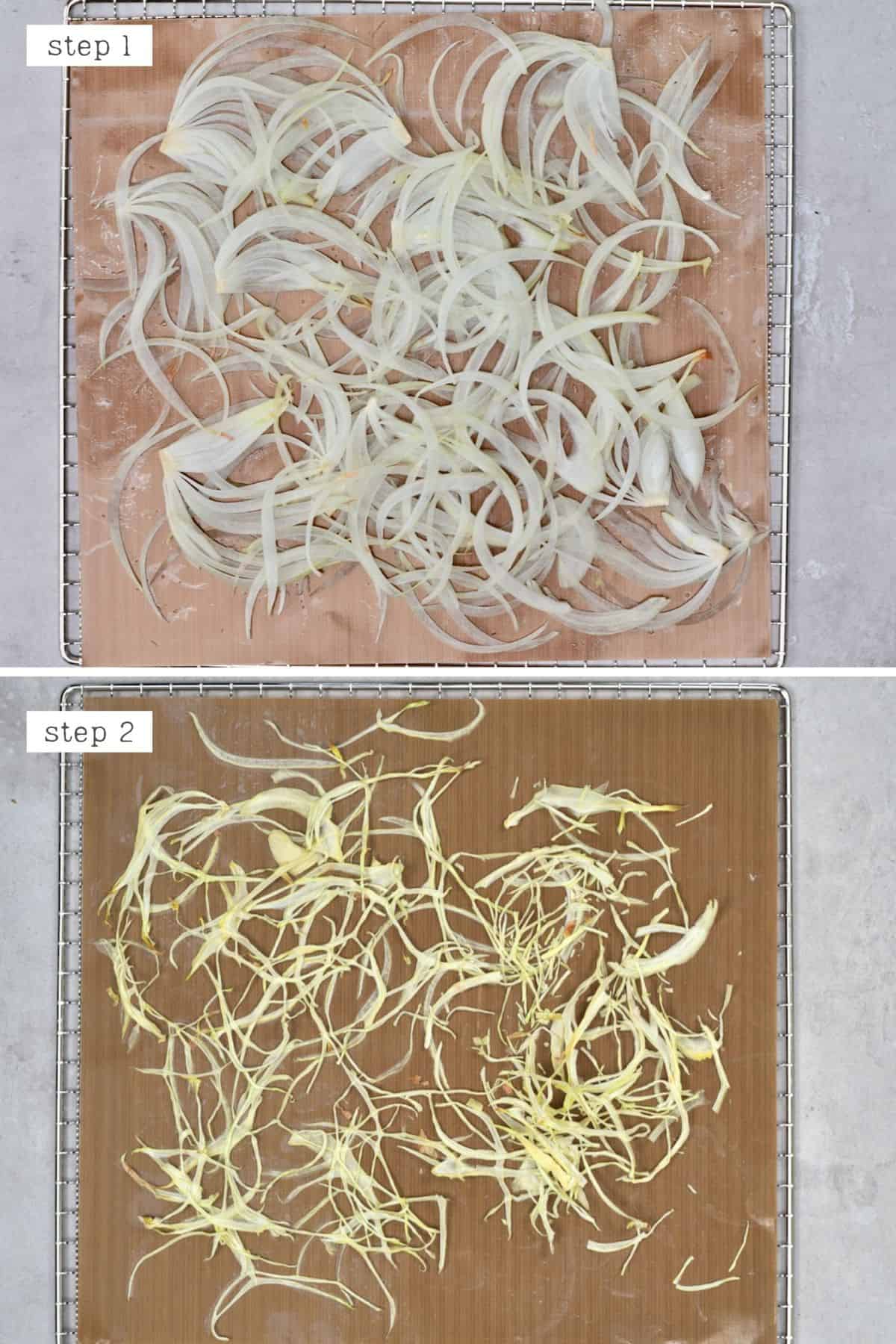
If your oven doesn’t go as low as that, then choose the lowest temperature and prop open the door with the handle of a wooden spoon or something similar, to allow for better airflow and for the steam to escape as the onion dehydrates.
Check on the onion hourly, optionally flipping it over a couple of times, to dry it faster.
Remove from the oven when it snaps rather than bends, or at least has a very little bend (as it should continue to crisp while cooling). Once cool, it should snap rather than bend. If not, then it’ll have to go back into the oven again.
Air Dry
Place the onion slices on a large kitchen towel/cloth or paper-lined baking tray and leave them in a well-ventilated area ( air circulation is needed!), near a window (if possible).
This option is best for warmer, non-humid climates with lots of sunshine. Colder and more humid areas will affect the drying time.
Flip the onion pieces a few times to speed up the process. This method can take a few days based on the onion’s thickness, weather, and humidity. They’re ready when the onions are completely dry.
How To Store
Store the dehydrated onion flakes in airtight glass jars, and keep them in a cool, dry, and dark location – like a kitchen cupboard.
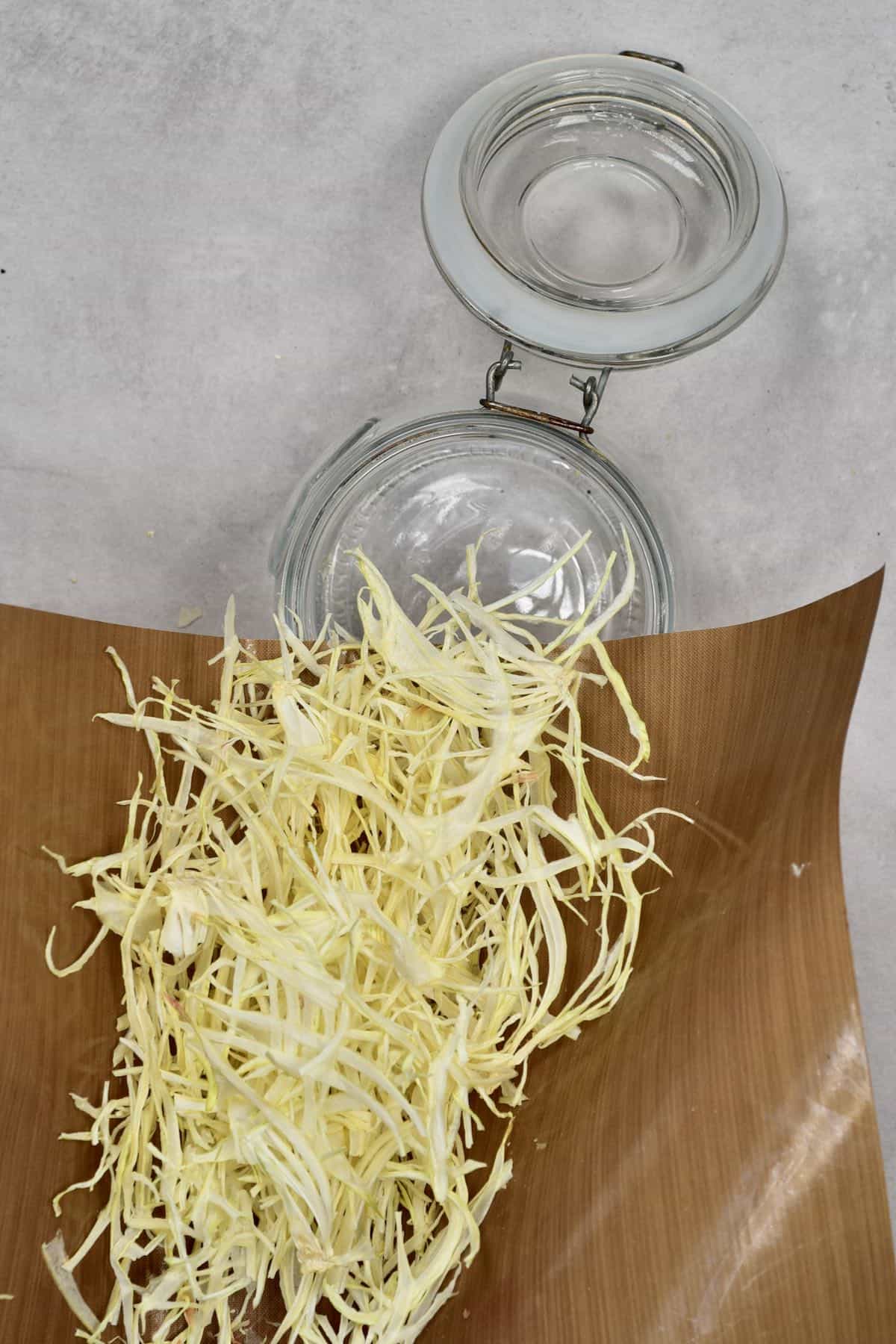
The flakes will keep well indefinitely in an airtight jar in your kitchen, as long as it remains 100% moisture free! You can also place some uncooked rice or beans into the container, which will absorb excess moisture and stop them from clumping. They’re best when used within the first year, though, as the flavor will deteriorate after that, I’ve found.
How To Use
There are several ways to use these onion flakes as a substitute for fresh onions in recipes that call for fresh onion. Below are just a few ways I use the dried onion flakes.
- Within liquid dishes like soups, stews, etc. – the liquid will soften/ re-hydrate the onion pieces and release the flavor. like this mushroom soup, Japanese-inspired Ramen Noodle Soup, or Lebanese Green Beans (Loubieh Bi Zeit).
- In or over bread and other savory baked goods – like bagels, buns, or bread. Like this Simple Homemade Multigrain Bread Recipe. Or even pizza crusts like this traditional pizza, or butternut squash pizza.
- Sprinkle over pizza (above sauce but below cheese and/or other toppings), before baking – the onion will rehydrate as it cooks, to add flavor.
Let me know in the comments what your favorite ways of using dehydrated onion flakes are!
Recipe Notes
- You can make dried minced onion using a food processor/mandoline then finely mincing with a knife. Spread over the dehydrator/oven trays in a thin layer and stir/flip over the onion a few times to break up any clumps and allow it to dry out faster.
- You can use the onions of your choice, though they will all affect the flavor in different ways. Pungent onions vs mild onions when fresh will have equal results when dried.
- If you’re using homegrown onions, it’s worth noting that the green leaves can be dried too. Though the time to dry between the onion and the leaves can vary.
- How To Rehydrate Onion Flakes – add the onions to some boiling water (around 1 cup flakes to 1 cup water). Allow them to soak for 20-30 minutes. Any leftover water can be used in soups, stews, and sauces.
Related DIYs/Recipes
- How to Make Beetroot Chips (Baked or Dehydrated)
- How to Make Onion Powder
- How To Make Garlic Powder
- How To Make Garlic Flakes
- Simple Golden Spice (Golden Milk Powder)
- How to Make Ginger Powder (Two Methods)
- How To Make Crispy Ginger Chips
- Turmeric powder at home
- How to Make Fried Onions (Crispy Onions/Birista)
If you try this onion flakes DIY, let me know your thoughts and questions in the comments. I’d also really appreciate a DIY rating and would love to see your recreations – just tag @AlphaFoodie.
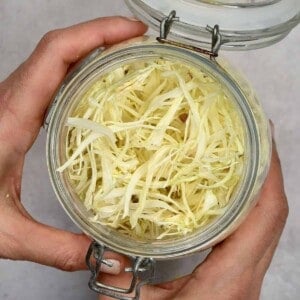
How To Make Onion Flakes
Equipment
Ingredients
- 4 onions
260 grams fresh onion yielded 23 grams of dried flakes
Instructions
Step 1: Prepare the Onion
- Peel and slice the onions. You can use a mandoline to get really even, thin slices. The thinner the slices, the quicker they’ll dry. Aim for 1/8 inch at the thickest.
Step 2: Dehydrate them
With a dehydrator
- Lay the fresh chopped onion over the dehydrator trays in a single layer, taking care not to make them overlap too much, and then dehydrate at 66ºC/150ºF for 6-8 hours (if high humidity, around 80%) or 4-6 hours (if low humidity).They are ready when they snap when trying to bend. If they're at all pliable, they need more time.
With an oven
- Spread the onion pieces over parchment-lined baking sheets, making sure the pieces don't overlap too much, and then place in the oven at its lowest temperature. It's best if it's between 130-150ºF (54-66ºC).If your oven doesn't go as low as that, then choose the lowest temperature and prop open the door with the handle of a wooden spoon or something similar, to allow for better airflow and for the steam to escape as the onion dehydrates.Check on the onion hourly, optionally flipping it over a couple of times, to dry it faster. Remove from the oven when it snaps rather than bends.
Air Dry
- Place the onion slices on a large kitchen towel/cloth or paper-lined baking tray and leave them in a well-ventilated area ( air circulation is needed!), near a window (if possible).This option is best for warmer, non-humid climates with lots of sunshine. Colder and more humid areas will affect the drying time.Flip the onion pieces a few times to speed up the process. This method can take a few days based on the onion's thickness, weather, and humidity. They're ready when the onions are completely dry.
How To Store
- Store the dehydrated onion flakes in airtight glass jars, and keep them in a cool, dry, and dark location – like a kitchen cupboard.
- The flakes will keep well indefinitely in an airtight jar in your kitchen, as long as it remains 100% moisture free! You can also place some uncooked rice or beans into the container, which will absorb excess moisture and stop them from clumping. They’re best when used within the first year, though, as the flavor will deteriorate after that, I’ve found.
Notes
- You can make dried minced onion using a food processor/mandoline then finely mincing with a knife. Spread over the dehydrator/oven trays in a thin layer and stir/flip over the onion a few times to break up any clumps and allow it to dry out faster.
- You can use the onions of your choice, though they will all affect the flavor in different ways. Pungent onions vs mild onions when fresh will have equal results when dried.
- If you’re using homegrown onions, it’s worth noting that the green leaves can be dried too. Though the time to dry between the onion and the leaves can vary.
- How To Rehydrate Onion Flakes – add the onions to some boiling water (around 1 cup flakes to 1 cup water). Allow them to soak for 20-30 minutes. Any leftover water can be used in soups, stews, and sauces.
Nutrition
Nutrition information is automatically calculated, so should only be used as an approximation.

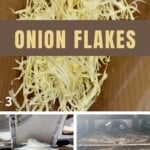
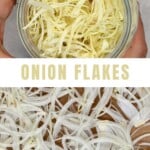

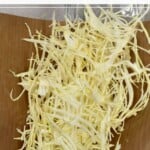
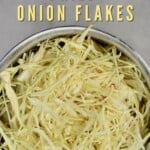









Mix onion flakes with a can of reduced cream and a tablespoon of malt vinegar or lemon juice, half teaspoon mustard (optional) refriderate, good ol Kiwi dip to have with crackers or chips.
This sounds delicious, Debbie. Thanks for sharing!
How do you keep your dehydrated onions from yellowing/browning?
It’s something that I have problems with every time I dehydrate my onions.
Hi Jean,
Are they browning while you are dehydrating them? If so, maybe the temperature is too high, causing them to “bake”, rather than just dry out. I hope this helps.
Good.
Thank you for your comment, Cassandra!
Can you make onion powder out of this?
Hi Sanchi,
Yes, you can. There is also a dedicated blog post for onion powder with lots of tips – https://www.alphafoodie.com/how-to-make-onion-powder/